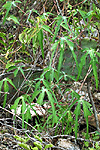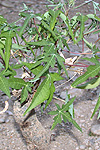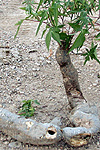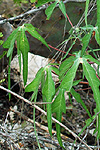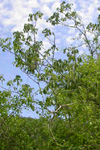

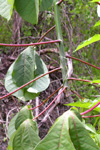
Manihot websteri
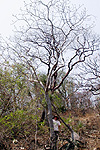
This remarkably large tree is a resident of the dry tropical forests of southwestern Puebla and parts of Oaxaca. This area is extremely rich in endemic tree species. Like many dry tropical forest trees, Manihot websteri flowers at the end of the dry season, just as it is leafing out in anticipation of the summer rainy season. These photos were taken on a trip with collaborator Ken Olsen, of Washington University in St. Louis, who has a remarkable eye for Manihot in the field thanks to his extensive field work with the South American species.

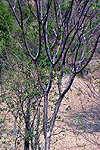


Manihot rhomboidea
This tiny species usually dies back to an underground tuber in the dry season. It has a wide range in western and central tropical Mexico.
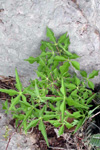
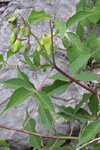
Manihot oaxacana
This arborescent species is of interest because it is more closely related to smaller members of the genus than it is to the other Mexican tree species. It thus likely represents an independent origin of the tree habit in the genus. It grows in dense tropical dry forests in the area of the Isthmus of Tehuantepec.


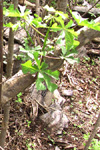
Manihot pringlei

Because of the low levels of cyanide-bearing compounds in its roots, this species was once thought to be a progenitor of cassava. Recent molecular studies have refuted this idea. Like most wild species of Manihot, however, little investigation regarding the potential of M. pringlei for enriching the cultivated crop has been conducted. This species is found in tropical dry forests and scrubs of northeastern Mexico.

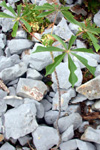


Manihot caudata

Like its cousins M. foetida and M. crassisepala, the wild distribution of this species is not well understood. There do seem to be some areas where it is found growing truly wild in western tropical lowland Mexico, but many areas may represent introduction by humans. There is considerable variation between populations in the overall shape of the tree, such as the round-crowned individual at left, and the flat-crowned individuals below, one of which is shown with Elena Conti, Héctor Hernández and Susana Magallón. The peeling bark of this species can be seen below right, and the striking filamentous leaf lobe tips below left.
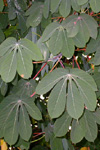
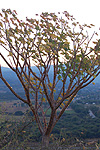

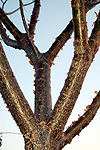
Manihot foetida/ crassisepala

The distinctness of these species is not clear. M. foetida is known only from cultivation in central Mexico, and recent exploration work by Victor Steinmann of the Instituto de Ecología, Pátzcuaro, has located wild plants of M. crassisepala in the Infiernillo region of Michoacán. The species are separated only on the basis of pubescence on the ovary. The seeds of this species are enormous, certainly the largest in the genus, and give the tree one of the common names is is known by in central Mexico, which translates to "cockroach tree", because of the resemblance of the seeds to cockroaches.
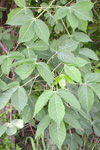
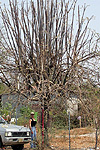
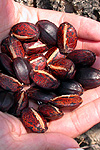
Manihot pauciflora
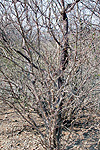
Sometimes considered the sole member of the genus Manihotoides, this species is one of the many endemics of the Valley of Tehuacán, in Puebla and Oaxaca states. This is the only species of that is a small, intricately branched shrub. It grows in very dry tropical forest or scrub on plains and arroyo banks in rocky soil. Our phylogenetic studies will show whether or not this species is closely related to Manihot obovata, the other strange shrub species found in Mexico.
Manihot obovata
This remarkable species is endemic to a small part of the extremely diverse dry tropical forest of central Guerrero. Despite being highly restricted in distribution, it grows along a major highway and is a conspicuous member of the vegetation. Nevertheless, it was not recognized as a distinct species until 1990, when collaborator Jaime Jiménez realized that it was not a Jatropha, as its general appearance would suggest. Unlike all other species of the genus, M. obvata is a large cane-like shrub that branches abundantly toward the tips bearing tiny rounded leaves.
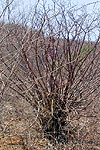

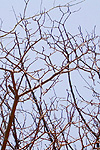
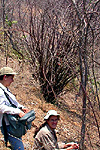
Manihot subspicata
One of the smallest members of the genus, M. subspicata is fairly common in the lowland shrublands of northeastern Mexico. Like most species of the genus, it tolerates disturbance well, and can sometimes be found on the edges of roads. It has a tiny stem usually less than 30 cm tall that emerges in the summer wet season, dying back to the massive underground tuber in the dry season.
